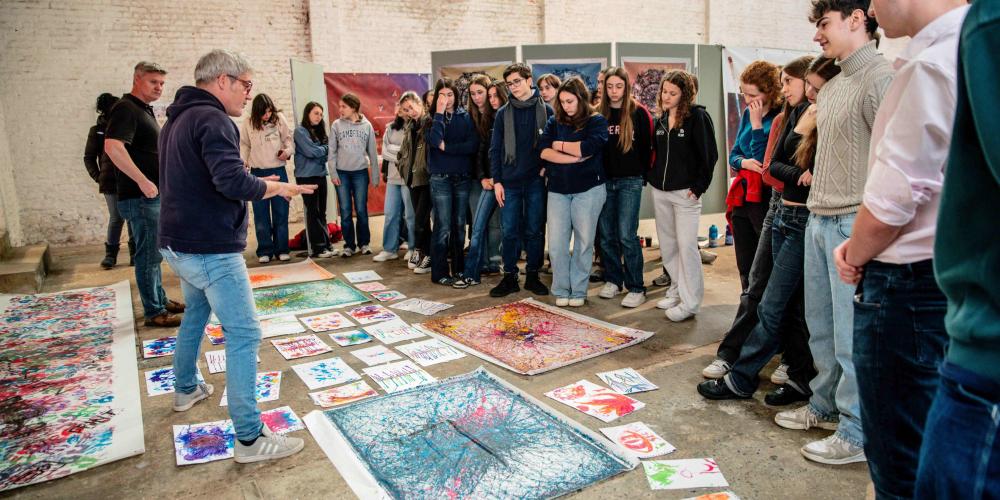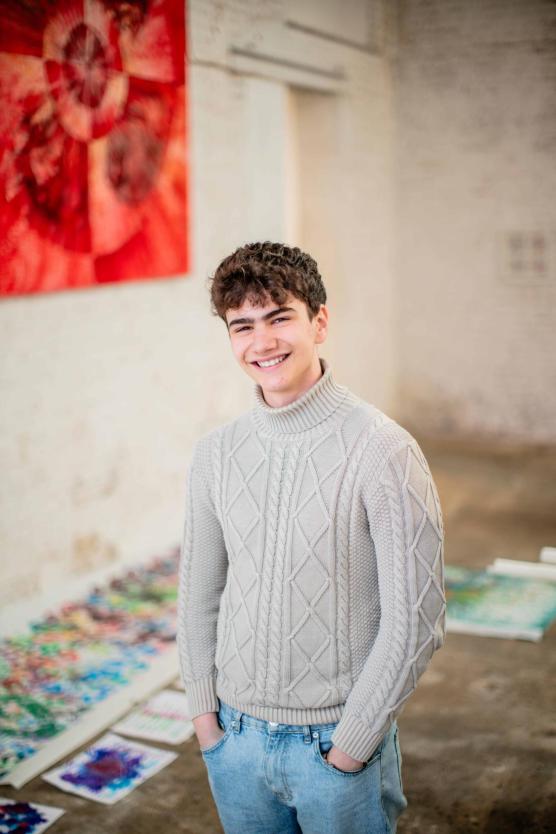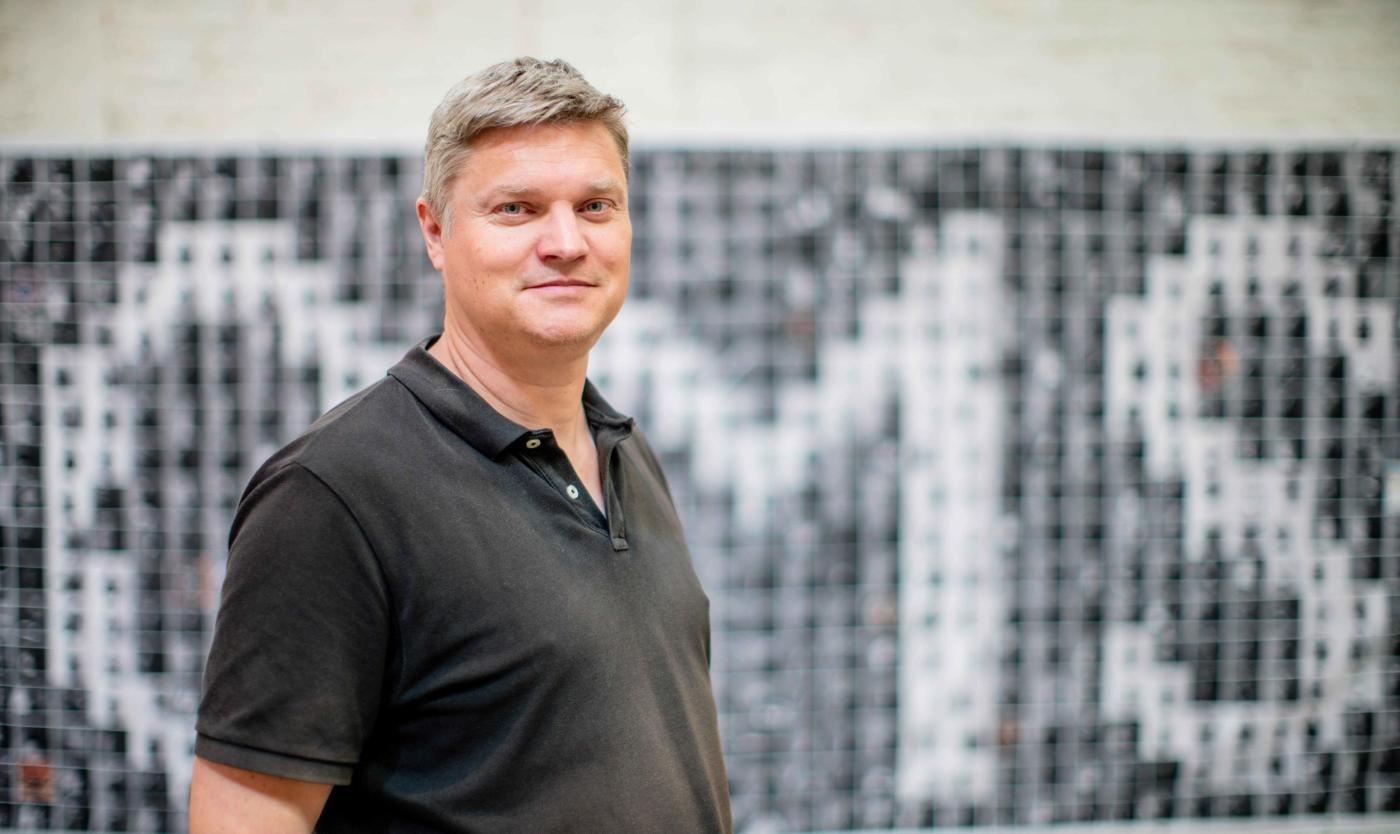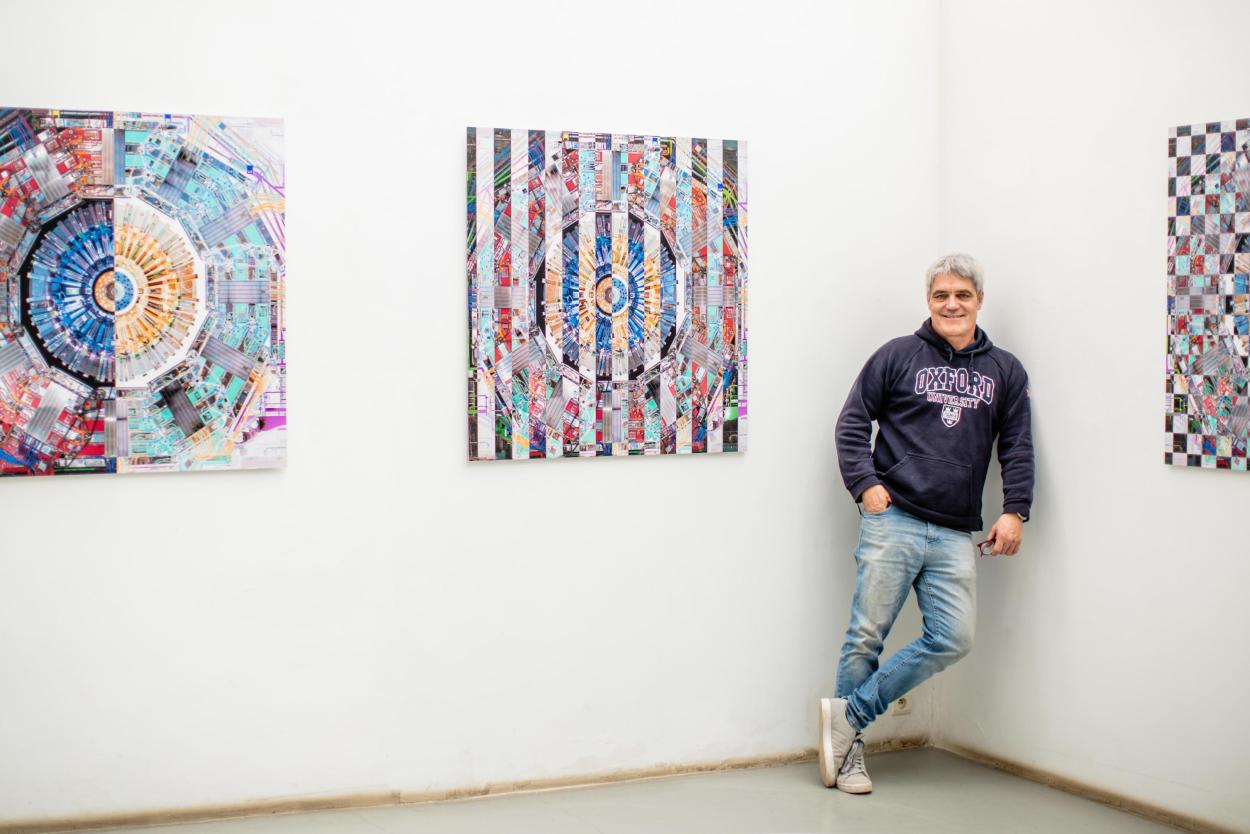
How do we respond to the challenges of the 21st century? Scientist Michael Hoch believes the answer is yet to be found in textbooks: “We won’t get there by rote learning of mathematical formulas. We need creative thinkers.” That’s why, at CERN in Geneva – the world’s largest particle physics laboratory – he has created programmes that encourage dialogue between science and art. In this context, VUB physics professor Michael Tytgat and Hoch organised a day of workshops on particle physics and art for pupils at EEB4, the European School in Laken.
Imagine Arts Science
The Imagine Arts' Science exhibition at Atelier34Zero in Jette runs until May 29. Want to discover how creativity can lead to purposeful solutions to global challenges? Then be sure not to miss the first edition of the Artscience symposium from May 17 to 18! Check out the program here.

Manuel
The venue was Atelier 34zero in Jette. In the morning, Hoch and Tytgat – who have worked together at CERN – introduced pupils to the intricacies of particle physics. Their aim was to reveal aspects of science that are not typically seen in class. The operation of a cloud chamber in particular enthralled 15-year-old pupil Manuel: “I found it truly impressive. The alcohol condensed, forming clouds. In that cloud, you could see tiny particles moving. It made it all very tangible.” Next, a 3D projection vividly demonstrated the workings of a particle accelerator. The youngsters later explored a dataset from the particle accelerator on their laptops. What collisions occurred? What particles were involved? Using their newly acquired knowledge, the students endeavoured to determine the answers. This became the theme of the day: what information can you extract from a dataset?
Just before lunch, Hoch linked the morning’s lessons to the arts with a guided tour of the Imagine ArtScience exhibition, on display until 29 May at Atelier 34zero. The exhibition looks at art that is inspired by science and says something about the principles of physics, chemistry, biology and more. A noteworthy element is Hoch’s own photographic work: images of the Large Hadron Collider at CERN – the largest and most powerful particle accelerator in the world – which he has manipulated to illustrate various physical principles. “By converting half of each image into a negative, the pictures allude to the issue of antimatter,” Hoch says. “The Big Bang produced as much matter as antimatter. Now the universe consists almost entirely of matter. What happened to the antimatter? This is what is being explored at CERN and what these images refer to.”
“We need more women in particle physics”
A striking black-and-white artwork featuring the letters CMS – referring to the Compact Muon Solenoid experiment at CERN – is also impressive. On closer inspection, it is composed of portraits. “These are all people involved in the experiment,” Tytgat says. “The photos of men are in black, those of women in white. The first thing that stands out is that there are still far more men than women in particle physics. This is a real problem, because we need them. It’s no accident that the portraits of the women form the letters CMS. Without them, we would be looking at a blank canvas.”

Michael Tytgat

Michael Hoch
Before the students broke for lunch, Hoch concluded the tour with a call that summarised the essence of the day: “It’s great to have brilliant artists and passionate scientists. But to tackle the world’s problems, you need dialogue between the two. The challenges we face, like global warming, are enormous. What we need is not yet in today’s textbooks. The world is changing. It’s not just about memorising formulas. The solutions for the future are yet to be imagined. That requires creativity.”
In the afternoon, the youngsters had the chance to be creative in three workshops. They left their own trail of data – their handprints – in paint on a large sheet of paper. Rolling marbles of different sizes smeared in paint across a canvas created art that was reminiscent of particle collisions in the Large Hadron Collider. Elsewhere, Giorgia and Alessandra let paint droplets trace a path on a folded sheet. “This is fun,” they say. “We’re more interested in art than in science, but this is a good way to see gravity at work.” The students get it. The art workshops weren’t just for fun: multiple principles of physics were at play.

“A day like today grounds me”
To round off the programme, Hoch gathered the group around the afternoon’s creations and linked the day’s activities. “A line of handprints, the trail of a paint droplet... this too is data. At first glance, they may not seem informative. But if you look closely and study them, you can start to deduce what has occurred. Why is one line thicker than another, why does a trail suddenly change direction, why does it come to a halt? These are things you can determine if you study these artworks like a detective.” But there’s more, he says.

“Looking isn’t enough. You also need some knowledge of physics, like understanding gravity. The more you know, the richer the world you observe.”
The nodding heads indicated that the message had been received. Amid the paint residues, we reflected with Michael Tytgat on the day and its significance. What’s the value of a project like this, involving a group of 15-year-olds and litres of paint? This isn’t the demographic he usually teaches. “A day like today grounds me,” he says. “Explaining a subject like particle physics to 15-year-olds is always a challenge. But it’s important if you want to encourage young people towards scientific fields of study. That’s why I do it. For that one student who will say to me in 10 years, ‘Remember when we got to throw paint around one afternoon? That’s when it clicked for me.’” Tytgat’s words had barely settled when we were interrupted by a serious boy with serious questions for the professor. We quietly took our leave. Perhaps he was the one. That one student...
Bio
Michael Tytgat is a professor of physics at VUB who has been involved in research at CERN for many years. He is an advocate of initiatives that merge science and art.
Austrian physicist Michael Hoch conducted his doctoral research at CERN, where he established the art@CMS outreach project. In his photographic work, he links science with art.